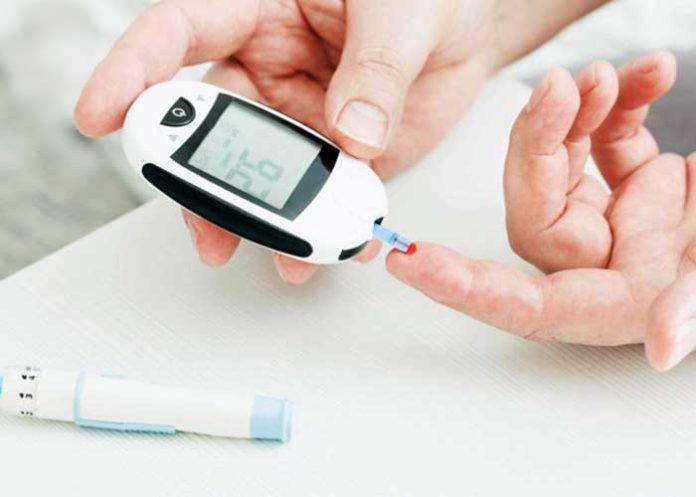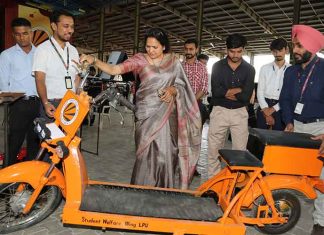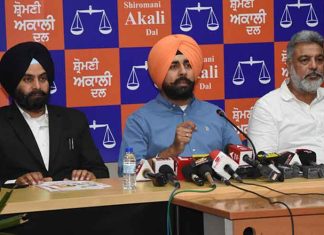New Delhi, July 23, 2023- From small reliable insulin pumps to wearable glucose monitors and even pancreatic transplantation, treatment options for diabetes have undergone a significant change in the last decade, and the future looks hopeful for better outcomes for people with diabetes, said health experts.
According to the World Health Organisation (WHO), about 422 million people worldwide have diabetes, the majority living in low-and middle-income countries, and 1.5 million deaths are directly attributed to diabetes each year.
Both the number of cases and the prevalence of diabetes have been steadily increasing over the past few decades and are predicted to rise further.
The chronic, metabolic disease is characterised by elevated levels of blood glucose (or blood sugar), which leads over time to serious damage to the heart, blood vessels, eyes, kidneys and nerves.
From the Glyptase routinely used in the last 10 years for the treatment of diabetes, the treatment of Type 2 diabetes has undergone a change facilitated by the discovery in widespread clinical use of two groups of drugs: SGLT2 inhibitors and GLP-1 receptor agonists.
“SGLT2 inhibitors are drugs that act on the kidney and help control the blood sugar along with helping some weight loss without low blood sugar levels. GLP1 is a molecule that is circulating in the blood secreted from the intestine and actually improves insulin secretion and does many other things including controlling appetite,” Dr. Ambrish Mithal, Chairman & Head – Endocrinology & Diabetes, Max Hospital, Saket, told .
The effects of these drugs are way beyond glucose control and are remarkable editions to our tools in combating diabetes.
“The oral tablet of SGLT2 can not only control diabetes and help weight loss but can also reduce the risk of progression of renal disease and also partially reverse that including reduction in urinary protein,” Dr Mithal said. These drugs have also shown to prevent heart failures and cardiac related deaths.
ALSO READ:
Indian-origin men admit maintaining a drug-involved premises in US
Similarly, the GLP1 available in two forms — oral or injectable once a week — which started as an anti-diabetic is now also an anti-obesity drug.
Further, technology is also playing a great role in managing diabetes.
Monitoring diet has now become much easier and personalised with several apps, based on artificial intelligence (AI) enabling people to regularise their diet and their glucose.
There has also been an increase in the availability of continuous glucose monitors (CGM), that are attached on the skin and can actually monitor sugar continuously for up to 2 weeks.
“From the conventional way of monitoring blood glucose by finger pricking once-twice a day or once a week, the new continuous glucose monitor device comes in the form of a patch, which when inserted on the patient’s arm or the abdomen, records the blood glucose from the interstitial fluid under the skin, and it provides real time data about the blood glucose in the user,” Dr Sonali Kagne, Deputy Consultant, Department of Endocrinology, Sir HN Reliance Foundation Hospital, Mumbai, told .
“This CGM system can record the data for up to seven days, or in some devices, it can record the data of 14 days and it takes one blood glucose reading every five minutes, thereby giving us a graph of how your blood sugar is behaving throughout the day for the 7 to 14 days,” she added.
Another advancement is in the form of new insulin pumps, particularly helpful for people with Type-1 diabetes, which can automatically adjust insulin delivery based on real-time glucose levels.
“Called a closed loop system, the CGM device that collects data about the blood glucose is combined with the insulin pump to deliver the insulin. The system acts like an artificial pancreas by assessing the high or low levels of blood sugar in a person at a given point in time and accordingly, adjusts the dose of insulin on its own and delivers that dose based on the meal that they are taking and how the sugars are behaving,” Dr Kagne said.
The health expert said the future is for personalised medicine.
“When we talk about the future options of the treatment of diabetes, much research is going on as to how we can identify how much is the role of genetics in a person’s diabetes levels and how we can use that data for the treatment. So, now there is an era of personalised medicine, so that we can tailor the treatment as per the individual needs, considering the factors such as genetics, lifestyle and glucose variability,” Dr Kagne said.
She explained that the pancreatic transplant for the treatment of Type-1 diabetes and Type -2 diabetes, are not very common currently.
“But in future with the advancement of the broader availability of the pancreatic transplant, it can be used for the control of the blood sugar level and better measurement of the diabetes in people who have diabetes and very fluctuating blood sugar levels, as well as those with underlying associated comorbidities like the infection of the kidneys,” Dr Kagne said.
Further, with ongoing research on microchips that can diagnose Type 1 diabetes, even before the symptoms appear; nanorobots travelling in the bloodstream while they measure glucose and deliver insulin, the future looks hopeful for people with diabetes. (Agency)
CLICK HERE to Subscribe to YesPunjab Telegram Channel & receive Important News Updates






































































